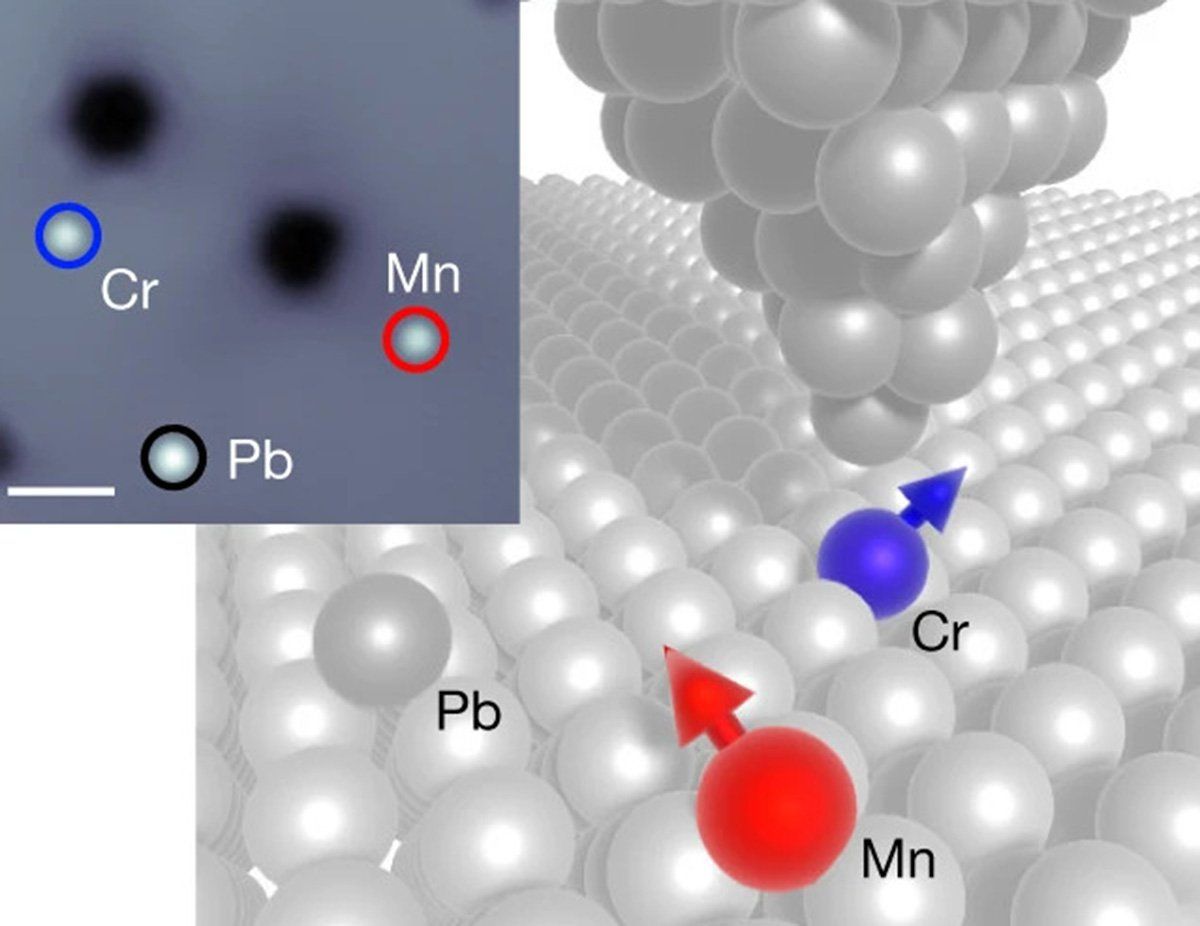Diodes, in which electricity flows in just one direction, are among the most common components in modern electronics. Scientists have long sought to create superconducting diodes to help build faster computers that burn less energy. Now a new study reveals the smallest possible superconducting diodes made using single magnetic atoms, potentially helping to usher in a new era of superconducting electronics.
Whereas ordinary electrical conductors all resist electron flow to some degree, superconductors conduct electricity without any resistance. This suggests that computers made using superconducting components such as diodes could prove far more efficient in both speed and power than their regular counterparts. Superconductors are currently known to work only at extreme cold or pressure, ruling them out for use in personal computers, but scientists have suggested superconducting electronics might still find use in centralized facilities such as supercomputers or server farms.
In the past five years or so, researchers created the first superconducting diodes. However, these relied either on applying magnetic fields to the devices or including magnetic layers within them. “The first approach is not compatible for larger architectures, in which the diodes need to each be addressed separately,” says study senior author Katharina Franke, an experimental physicist at the Free University of Berlin. “The second approach requires complex material design.”
Now Franke and her colleagues have created superconducting diodes consisting of just a superconductor and a magnetic atom on top of it. “It is thus a simple device and with simple control by choice of the magnetic atom,” she says.
In the new study, the researchers experimented with Josephson junctions, which each consist of a very thin insulating film sandwiched between two superconducting layers. These devices help make up extraordinarily sensitive magnetic sensors known as superconducting quantum-interference devices, or SQUIDs. They are also key to superconductor-based quantum computers that IBM and Google are building in the hope they can one day radically outperform any regular computer.
The researchers first deposited single magnetic atoms—either lead, chromium or manganese—on a superconducting lead crystal. They next placed a scanning tunneling microscope‘s superconducting lead tip on top of these atoms
Study lead author Martina Trahms, an experimental physicist at the Free University of Berlin, and her colleagues found they could produce a diode effect in these atomic-scale Josephson junctions. In addition, they could control the strength and direction of this effect based on which atom they sandwiched between the superconductors. A lead atom showed no diode effect, whereas the chromium and manganese atoms did, although electricity flowed through them in opposite directions.
A theoretical model from study co-author Felix von Oppen, a theoretical physicist at the Free University of Berlin, and his colleagues revealed that currents of quasiparticles help explain this diode mechanism. The researchers suggest this could lead to new ways of creating atomic-scale superconducting diodes.
“Superconducting diodes may at some point in the future be integrated in the construction of quantum computers,” Franke adds. Specifically, they could serve as controllable junctions between key components of quantum computers known as qubits that also minimize disruptive interactions between the qubits, she explains.
The scientists detailed their findings online on 8 March in the journal Nature.
- Printed Diode Is Fast Enough to Speak With Smartphones ›
- Room-Temperature Superconductivity Claimed - IEEE Spectrum ›
- Superconducting Microprocessors? Turns Out They're Ultra-Efficient ... ›
- Superconductor ICs: the 100-GHz second generation - IEEE Spectrum ›
Charles Q. Choi is a science reporter who contributes regularly to IEEE Spectrum. He has written for Scientific American, The New York Times, Wired, and Science, among others.


